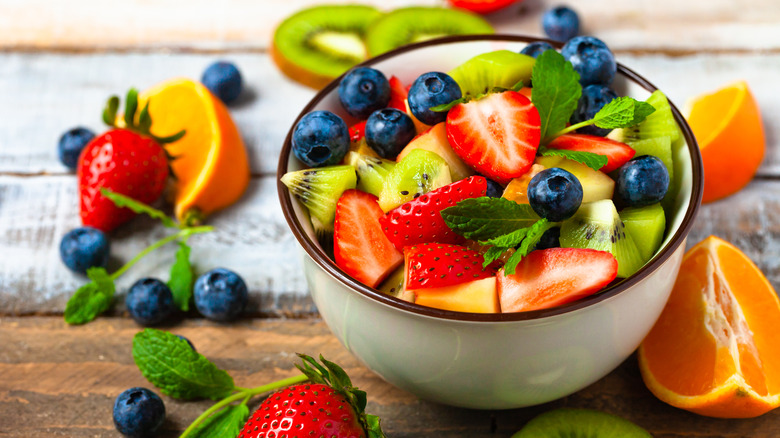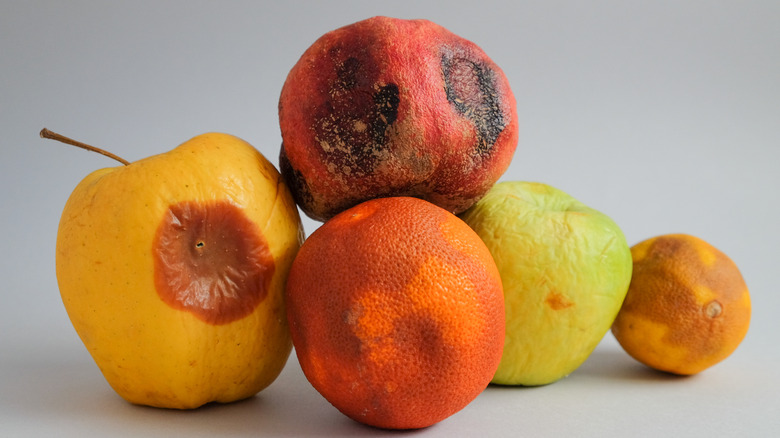Do Fruits Lose Their Nutrient Value If They Start To Brown?
Fruit is a healthy and delicious snack that can be eaten at any time of day. It can complement a hearty breakfast, be eaten as a midday snack, or even be used as a healthier alternative to dessert. Once fruit has been picked and chopped up, however, it starts to go bad — there's only a certain amount of time before ripe fruit becomes overripe and rotten (via Taste of Home).
In some cases, certain fruits, like apples, can even start to turn brown shortly after being sliced or chopped. This is caused by a process known as oxidation, and it occurs when the fruit is exposed to oxygen. While this doesn't mean that the fruit immediately goes rotten, it does speed up the aging process, shortening the window of freshness. As a result, fruit usually only lasts a few days after being exposed to oxygen and turning brown. Generally speaking, fruit should be eaten within 3 days of making or purchasing it, but it can last up to 5 days in the refrigerator.
The nutritional content of fruit changes over time
Since oxidation can speed up the aging process of fruit, can it also cause fruit to lose its nutritional value? As it turns out, the answer is yes. Fruits have a rather high nutritional value, but their nutrient content changes once they've been harvested. According to LiveStrong, the browning and softening of fruits due to oxidation is a sign that they have lost some of their nutritional content. However, this happens slowly over time and is unlikely to have a significant effect on the overall nutritional value of most fruits.
That being said, oxidation isn't the only process that can cause fruit to lose nutrients. Believe it or not, respiration can also have the same effect. Respiration is a process that occurs in plants to help break down organic matter, like carbohydrates and protein, and convert it into heat energy. This can lead to a loss of flavor and nutrients, especially if produce is stored in a warm and dry environment. As a result, fruit that isn't grown locally is more likely to be less nutritious than fruit that has been grown and harvested on a nearby farm.


